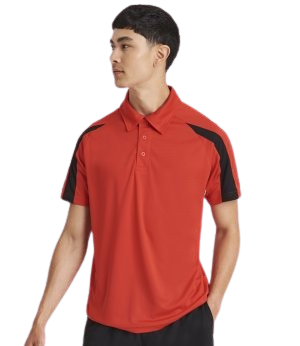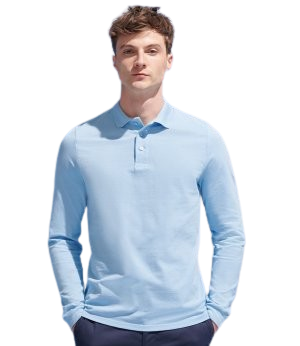Forget the days of boring uniforms and generic team wear. The world of branding has gotten a serious style upgrade, and customisation is king. In this fast-paced world, people crave individuality, and that extends to the clothes they wear – especially the clothes they wear to represent their company or team.
But with so many custom clothing options out there, why should you choose customised polo shirts? Buckle up because we’re about to show you how these versatile garments can transform your brand from forgettable to phenomenal.



Can You Brand and Sell Custom Clothing?
Absolutely! But success requires preparation, industry knowledge, and strategic branding. Here, we completely explore everything you need to know about custom clothing, from the steps involved to branding your apparel line.
Steps to Sell Customised Clothing Successfully
- Find Your Niche: Identify a specific group within the market, like fitness enthusiasts or vintage fashion lovers, to target your products. Focusing on a niche allows you to tailor your offerings and marketing strategies more effectively to meet their unique preferences and needs.
- Consider Target Customer: Understand who your ideal customers are, whether they’re sports teams, young adults, or businesses in need of uniforms. Knowing your target audience helps you create products and marketing messages that resonate with their interests and solve their specific problems.
- Product Type: Decide on the types of products you’ll offer, such as long sleeved polo shirts, personalised hoodies, or a mix of these. This choice shapes your product line and helps attract different segments of customers based on their preferences and styles.
- Unique Selling Proposition (USP): Define what makes your brand stand out from competitors. Whether it’s innovative designs, high-quality craftsmanship, or eco-friendly materials, your USP gives customers a compelling reason to choose your products over others in the market.
- Create Your Collection: Develop a cohesive range of products that reflect your brand’s identity and appeal to your target audience’s tastes. A well-curated collection not only strengthens your brand’s presence but also ensures consistency and attractiveness to your customers.


Here’s how to get started:
- Market Research: Analyse customer preferences, competitor offerings, and current trends to guide your design decisions. This helps ensure your products meet market demand and stand out from the competition.
- Original Designs: Collaborate with designers, if needed, to create eye-catching and memorable designs that resonate with your target market. Unique designs enhance your brand’s appeal and recognition.
- Prototyping: Create prototypes of your designs to assess quality and appeal before mass production. This step ensures your products meet both your standards and those of your customers.
Choose the Right Production Technique:
- Digital Printing: Digital printing is ideal for designs that feature intricate details, multiple colours, and small quantity orders. It uses advanced technology to produce high-quality prints with precise detail, making it suitable for custom designs that may require frequent changes or variations. Digital printing is particularly advantageous for creating printed clothing in the UK market due to its flexibility and ability to handle complex designs effectively.
- Screen Printing: It is a cost-effective method, particularly suited for basic designs and larger quantity orders. It involves creating a stencil (screen) for each colour and then applying ink through the screens onto the garment. This process results in vibrant and durable prints, making it highly efficient for bulk production where fewer colours are used consistently.
- Embroidery: It is a technique that involves stitching thread into fabric to create designs. It is valued for its sophisticated and polished appearance, making it ideal for high-end fashion items, business attire, and embroidered personalised shirts. Embroidery adds a premium and durable finish to garments, enhancing their overall quality and appeal, especially for items requiring a more refined and professional look.
Find Reliable Manufacturers and Suppliers:
- Vendor Research: Look for suppliers known for high-quality materials, excellent service, and positive client feedback. Networking at trade shows and industry events helps connect with potential partners.
- Request Samples: Always ask for product samples to verify quality and suitability before committing to a supplier. This ensures their products meet your standards and align with your brand.
- Negotiate Terms: Discuss pricing, minimum order quantities, production timelines, and payment terms with the supplier. Clear negotiation helps establish a mutually beneficial relationship and smooth operations.



Create an Online Store:
- E-commerce Platform: Select an e-commerce platform that fits your budget and business objectives. Each platform offers different features, so choose one that aligns with your needs for scalability, ease of use, and customisation options.
- Website Design: Invest in a well-designed, user-friendly website that accurately represents your brand identity. Your website should be visually appealing and easy to navigate, allowing customers to browse products and make purchases effortlessly.
- Product Listings Create detailed and visually appealing product listings with clear descriptions, accurate pricing, and high-quality photos. Ensure that each listing provides all necessary information to help customers make informed buying decisions.
Branding Your Custom Clothing Line
A logo and tagline are a start, but branding is about connecting with your target audience on an emotional level. Here’s how to create a powerful brand for your custom clothing:
- Define Your Brand Identity: Your brand values are the guiding principles behind your business decisions. They should resonate with your target audience and differentiate you from competitors. Common values in fashion include sustainability, quality, innovation, and inclusivity.
- Develop a Brand Voice: Your brand voice is how you communicate with your audience. It reflects your company’s personality and core values. For example, a youth-oriented brand might use a lighthearted, informal tone, while a brand targeting corporate clients would use a more professional one.
- Create Recognisable Visuals: Visual elements are crucial for creating a unified, memorable brand. This includes your logo, colour scheme, fonts, and overall design style. These elements should be consistent across all marketing materials, from your website and social media to packaging and promotional products.
At Last
Building a successful custom clothing business requires market research, innovative designs, the right production methods, and a strong brand identity. By following these steps and focusing on excellent customer service and smart marketing, your brand can thrive in the competitive fashion industry.
Ready to elevate your brand with custom clothing? We offer a wide range of customisable polo shirts in the UK, including long-sleeved options. Contact us today to discuss your requirements and create customised polo shirts that perfectly represent your brand!


